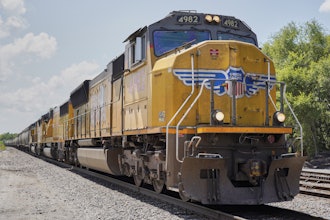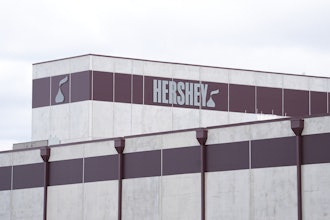
According to the American Trucking Association, truckers move approximately 72 percent of the country’s freight by weight. Truckers are the lifeblood of our supply chain and right now we’re struggling to keep those trucks on the road. Experts suggest that, if recruitment efforts continue to flag, the trucker shortage could balloon to as many as 160,000 drivers in 2031.
To this point, most of the conversation around this shortage has centered on long-haul truckers. This makes sense: the challenges of long-haul trucking, like social isolation and poor sleep, are significant and will need to be addressed if we're ever going to fix this shortage. But the fact is that we are also witnessing a significant shortage among short-haul truckers—who are just as important to the strength of our supply chain.
Throughout the pandemic, we saw the challenges that ensue when the supply chain is disrupted. We’ve learned that what happens within the trucking industry radiates out and affects every aspect of the US economy, from e-commerce to construction. If we want to avoid the disruptions that have plagued the supply chain these last few years, we’re going to need to get proactive about getting more short-haul truck drivers on the road.
Challenges Short-Haul Truckers Face
We all know the challenges that long-haul truckers face:
- Problems with parking and lodging.
- Health issues from long periods spent sitting.
- Long stretches of time away from friends and family.
Ostensibly, short-haul trucking is free from some of these problems. However, these drivers face their own unique challenges - ones which have contributed to our ongoing shortage and put the health of our supply chain at risk.
For one thing, while long-haul truckers are typically employed by a single company, most short-haul truckers are more like freelancers. Their daily workload is entirely dependent on the relationships they’ve managed to forge on their own, which means work can be inconsistent at best. One month might bring more work than they can handle; the next they might struggle to make ends meet.
This feast-or-famine cycle can take a toll on the mental health of short-haul drivers, and this is exacerbated by all the usual headaches of freelancing—like having to manage every other aspect of their business from accounting to maintenance to customer relations.
The stress of this is compounded by the fact that short-haul drivers often have a more demanding schedule than long-haul drivers—they have to make multiple deliveries a day within very specific windows of time. Bad traffic or an unexpected street closure can have a domino effect, delaying an entire day’s worth of pickups and deliveries. Without the aid of technology, short-haul drivers are forced to build their own routes and hope for the best.
Real-Time Tech Could Help
Real-time freight technology can empower truckers in all areas of the country, providing the tools they need to do their job better and spend more time with their family. Technology allows truckers to find jobs more easily, improve their working conditions, understand routes more effectively and get paid more for each drive.
When people think of AI in connection to trucking, they tend to think of autonomous vehicles. While these do stand to revolutionize the trucking industry, the fact is that the technology isn't quite there yet.
In the short-term, though, AI stands to revolutionize trucking in much subtler but no less significant ways—by optimizing once-scattered processes and using data to increase speed and profitability.
Instead of living at the mercy of their city’s driving conditions, short-haul truckers will be able to use predictive analysis around traffic and time of day to optimize deliveries in real-time. Instead of waiting around for a call that might never come, AI-facilitated platforms will instantly connect short-haul drivers with the people who need their services, eliminating unwanted downtime.
Already, predictive data analytics are making a major difference in how the industry operates on a day-to-day basis. Algorithms taking account of things like truck utilization data, driver wellness, load percent capacity and other variables are helping to reduce inefficiencies, optimize routes, manage things like mileage and miles per gallon, and in general make things easier for both drivers and businesses.
Ultimately, this crisis presents the U.S. trucking industry with an opportunity—a chance to actually drill down into the problems that have plagued the industry since long before this current driver shortage. The goal should be to create a more equitable and sustainable trucking industry, one that will benefit both truckers and businesses.




















